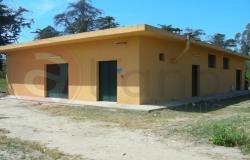Italian researchers have come up with hope for the world's chocoholics.
A team in Cagliari have uncovered scientific evidence that a consuming love for the so-called 'food of the gods' is not the fruit of weakness but the result of chemicals.
Giancarlo Colombo of the IN-CNR research centre said work with lab rats had shown just how fast chocolate addiction could take hold.
The animals were put in a container with a chocolate drip they used by pushing a lever, he explained to the journal Behavioural Pharmacology.
''They rapidly learned that 10 pushes activated the drip for five seconds. In a 20-minute session, they built up to about 1,000 pushes and consumed more than a tenth of their body weight,'' he said.
Even when the drinking chocolate was removed the rats kept hoping it might come back on tap, pushing the lever up to 250 times in a row in the hope of seeing a drop, Colombo said.
But when they were given a new anti-obesity pill called rimonabant, he said, the rats ''drastically'' reduced their visits to the lever.
Colombo said this suggested pills that act on the nerve receptor targeted by rimonabant might cut out chocolate cravings altogether.
According to recent estimates, 40% of women and 15% of men in Western countries are chocoholics to a greater or lesser degree.
''These figures highlight the impact of a condition that is rightly being compared with a substance abuse disorder,'' Colombo said. Rimonabant (also known as SR141716, Acomplia, Riobant, Slimona, Rimoslim, and Zimulti) is an anorectic anti-obesity drug. In technical terms it is described as ''an inverse agonist for the cannabinoid receptor CB1''. Its main effect is reduction in appetite.
Rimonabant is the first selective CB1 receptor blocker to be approved for use anywhere in the world. In Europe, it is indicated for use in conjunction with diet and exercise for patients with a body mass index greater than 30 or patients with a BMI greater than 27 with associated risk factors, such as type 2 diabetes or dyslipidaemia, a blood-fat disorder. As of 2007, the drug was available in 38 countries.







